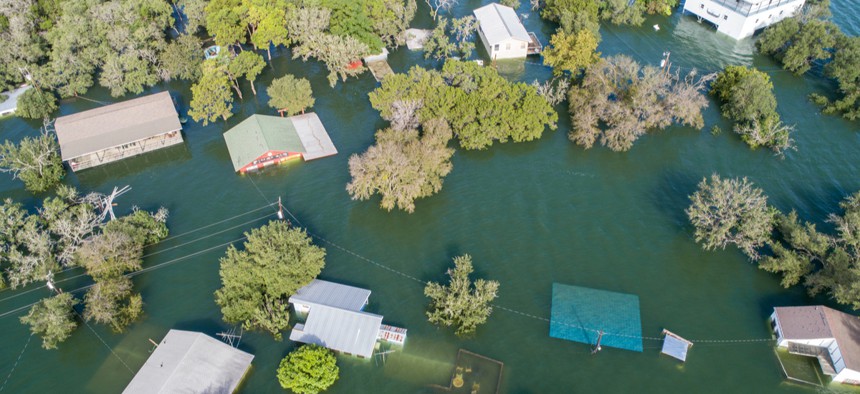Now Is the Time to Tackle Climate Change. Here’s How States Can Lead.

Record-breaking floods is just one of many examples of the effects of climate change. States can lead efforts to identify innovation solutions to address this issue. SHUTTERSTOCK

Connecting state and local government leaders
COMMENTARY | The risks from climate change hazards are growing in most American communities. State governments play a key role in helping local governments build a pipeline of resilience projects that will mitigate risks from extreme weather hazards.
There is new and necessary political momentum across federal, state and local governments to engage in serious action to address climate change. Spurred by recent executive action from President Joe Biden, the nation appears to be on the cusp of a large-scale federal infrastructure effort that incentivizes resilience and drives an intergovernmental approach on the issue.
While the federal government plays an important part in financing climate resilience projects, it’s state governments that will play an instrumental role in steering and implementing those initiatives. As taxing bodies, grant pass-throughs, data purveyors and infrastructure owners, states possess the ability and responsibility to make a difference in building local climate resilience. And since local governments lack the capacity and financial capital to deal with the consequences of climate change by themselves, states are the lynchpin to moving the climate change agenda forward.
Increasingly, states are building momentum for climate resilience. A September 2020 survey found that of the 30 states who responded a majority are advancing a resilience-building agenda. Some examples of those actions include establishing interdepartmental coordinating bodies, principles for state investment in climate resilience, state climate resilience plans, resilience standards for state infrastructure, climate data and risk analysis for local governments and support for developing local shovel-ready resilience projects.
In California, to ensure people in wildfire-prone areas can continue to receive homeowner’s insurance coverage after severe fires in recent years, officials prevented insurers from canceling or refusing to renew policies for 2.1 million households in or near areas hit by the blazes.
Another state, Maryland adopted legislation that allows one or more local governments to establish a resilience authority—a new entity that can bond against local government revenue to raise money to finance resilience infrastructure projects.
These states provide just two examples of the enormous potential for local resilience building that resides with state governments. State governments can adopt inventive strategies to help local governments increase investment in climate resilience by:
- Providing local governments with climate data and risk analysis, technical guidance and assistance, communications assets for resilience and other tools to strengthen their resilience capabilities.
- Increasing financial resources for resilience investment. While current budget constraints may make this a daunting challenge, there are various means of providing financial support that recognizes each state’s unique political situation, fiscal condition and legal constraints. Examples of these support measures include: bonding against future tax revenue, tapping revenue generated by carbon-pricing markets and placing surcharges on property insurance.
- Supporting development of local pipelines of “ready-to-go” projects for climate resilience that can be used by local governments, private sector developers, community organizations and nonprofits.
- Giving local governments flexibility with funding mechanisms like local tax authority and special purpose entities, along with credit rating support for public infrastructure projects that retrofit and develop climate-resilient infrastructure.
- Leveraging private investment in local resilience development, including the protection of private land, utilities, buildings and businesses.
- Taking advantage of the expansion and increased flexibility of federal funding for pre-disaster resilience by tapping funds available from the Federal Emergency Management Agency and the U.S. Department of Housing and Urban Development and other similar funding streams.
We may never get an opportunity like the one we have now to address climate change. With all three levels of government interested and engaged on the issue, this is finally the moment we’ve been waiting for to make the idea of a resilient nation a reality.
Joyce Coffee is president of Climate Resilience Consulting. Pete Plastrik is vice president of Innovation Network for Communities. Their recent report is: How State Governments Can Help Communities Invest in Climate Resilience

NEXT STORY: Preparing for the CDM dashboard: Big data and the cloud




